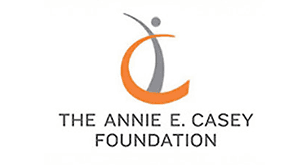The number of adults living at home is at an all-time high, with about 45% of people ages 18 to 29 reporting they stay at their parents’ home largely because the nationwide affordable housing shortage makes it too expensive for many young … Read More
Safety Permanency & Well-being

An Introduction to the Child Welfare Community Collaborations Grantees and Strategies
Overview of the Initiative The Child Welfare Community Collaborations (CWCC) initiative is a set of cooperative agreements funded by the Children’s Bureau (CB) within the U.S. Department of Health and Human Services’ Administration for Children and Families (ACF). CWCC funding … Read More

The AFCARS Report
FY 2022 AFCARS Foster Care Data Release AFCARS Background (AFCARS 1993) The AFCARS final rule was published December 22, 1993; the federal regulations at 45 CFR 1355.40 implemented Section 479 of title IV-E of the Social Security Act. AFCARS was … Read More

Pharmacists’ Vital Role in Identifying and Reporting Child Abuse
ABSTRACT: Childhood abuse, which manifests in adverse childhood events such as neglect and physical, sexual, and emotional abuse, is widespread in the United States. Each year, the Child Protective Services agency rescues more than one-half million children from maltreatment. Because … Read More

Child Opportunity Index (COI)
Neighborhoods matter. Children who live in neighborhoods with quality schools, safe housing, access to healthy food, parks, clean air and economic opportunities air are more likely to grow into healthy, productive adults than children who do not have access to … Read More

Leveraging Cross-Program Data to Modernize Outreach & Enrollment in SNAP & Connected Benefits
Across the human services sector, a variety of data sharing models support state and local benefits access interventions and increasingly catalyzes longerterm systems transformation initiatives. Projects funded under the Coordinating SNAP & Nutrition Supports (CSNS) grant program deployed three distinct … Read More

From Evidence to Action: How Do We Establish Systems to Support Evidence Use?
Creating evidence is important. Creating usable evidence is even more so. But is it enough to just create high-quality usable evidence? If the evidence we generate is not used, we minimize our ability to achieve our shared mission of improving the lives of … Read More

CDC Guidance for Communities Assessing, Investigating and Responding to Suicide Clusters, United States, 2024
Introduction In 2021, approximately 48,000 lives were lost to suicide in the United States. During this time, suicide was among the 10 leading causes of death among persons aged 10–64 years and the second leading cause of death among children … Read More

Discrimination In Multi-Phase Systems: Evidence From Child Protection
Introduction Large racial disparities have been documented in many high-stakes settings—such as employment, healthcare, housing, and criminal justice—raising concerns of discrimination by individual decision-makers. At the same time, there is growing understanding that a focus on individual decisions can yield … Read More

Connecting Sex Trafficking Survivors To Education And Jobs
Wellspring Living, a grantee of the Annie E. Casey Foundation, is a nonprofit that serves survivors of sex trafficking and those at risk for exploitation. Based in Metro Atlanta, a city with one the highest rates of human trafficking in the United States, the organization … Read More

